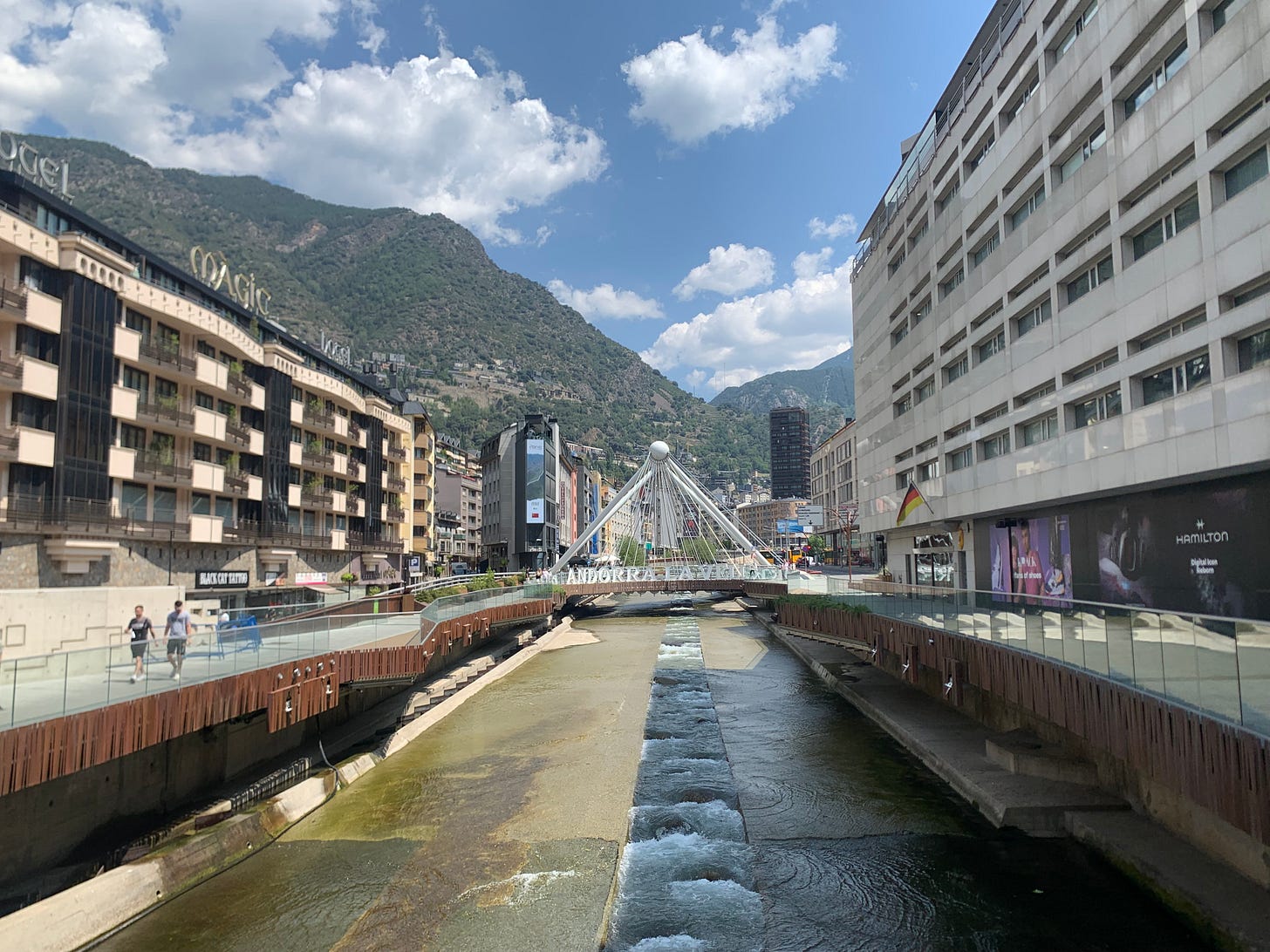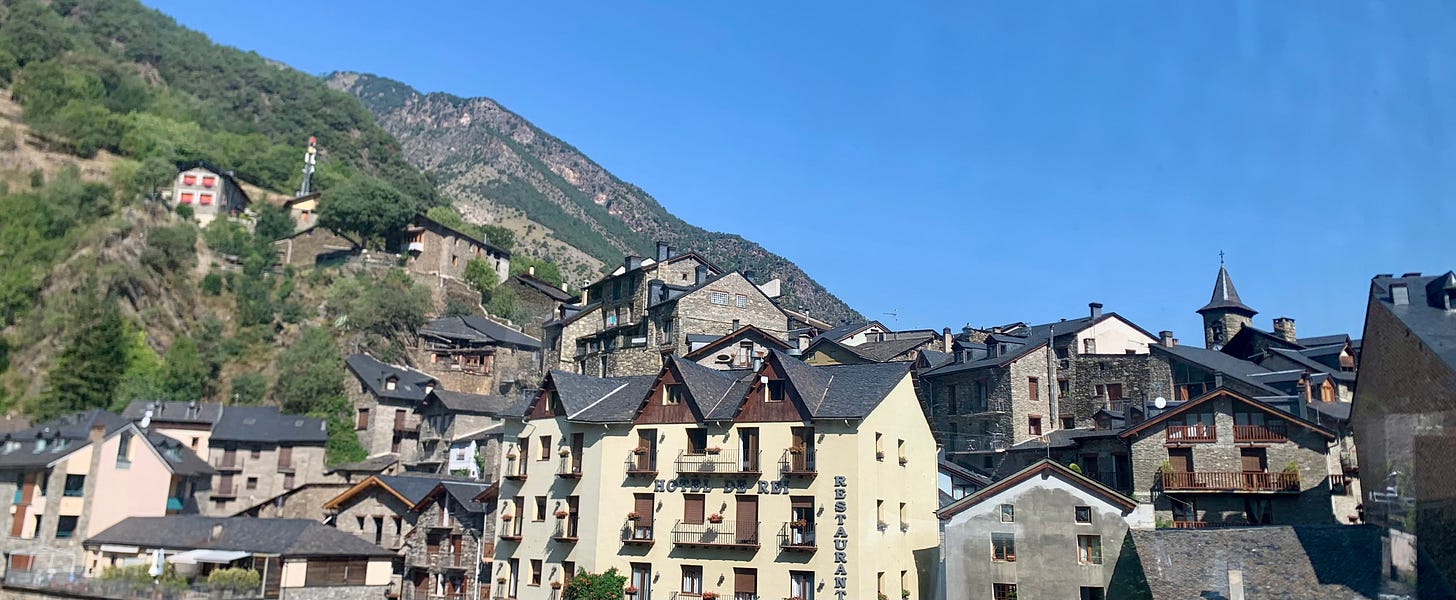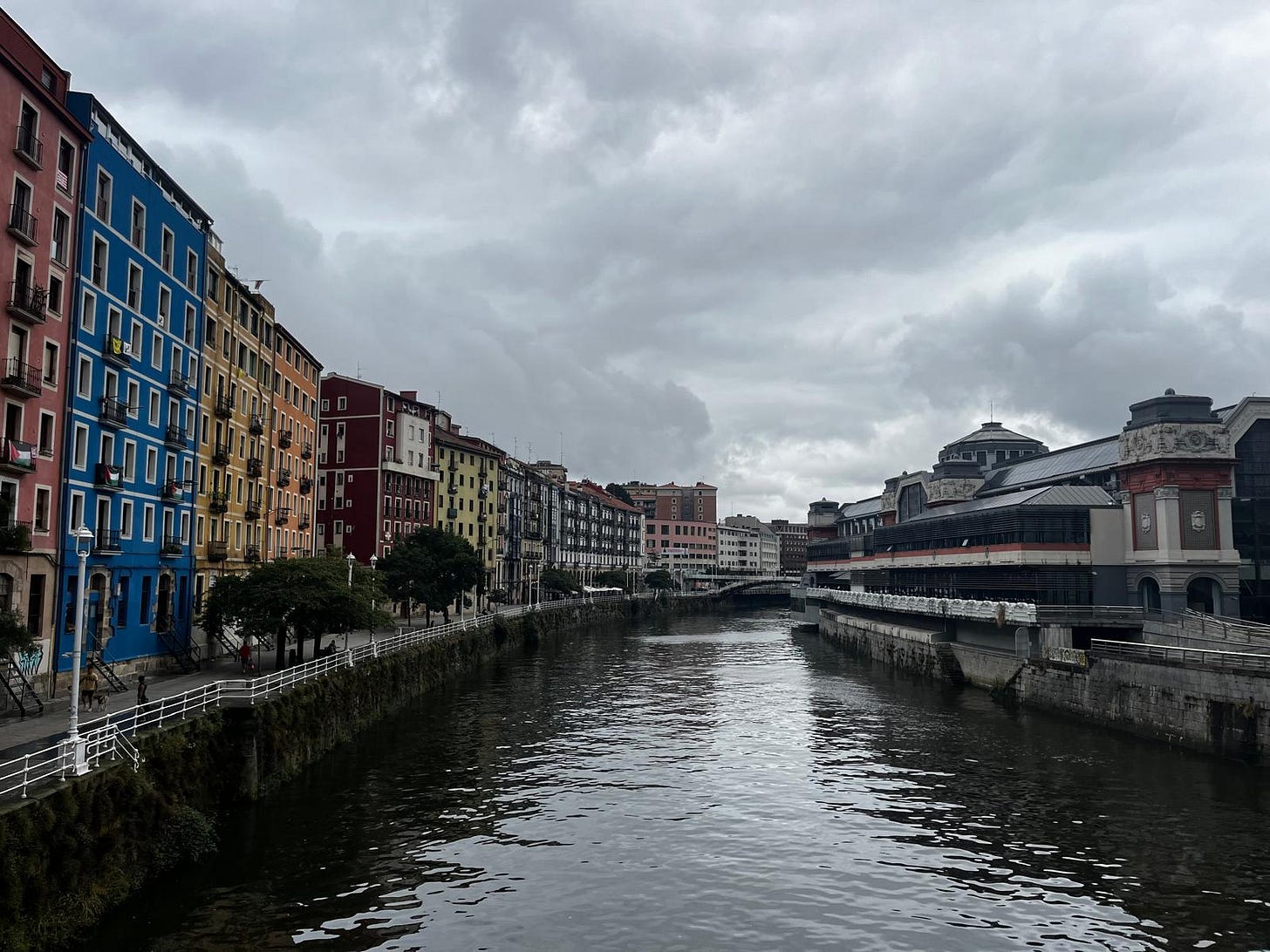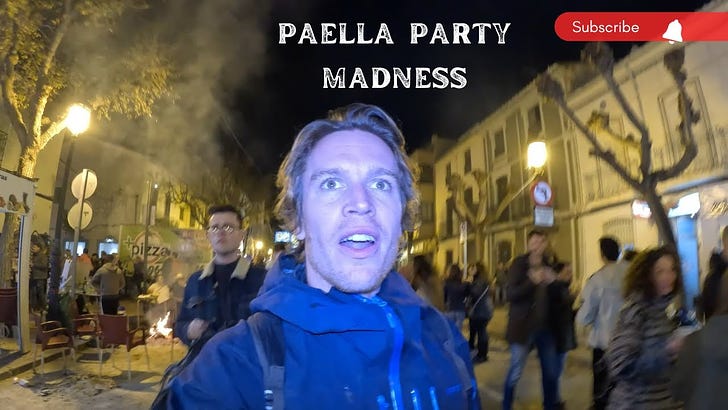Why are People in the North of Spain Happier?
Exploring the Pyrenees, Bilbao, Cantabria, Asturias, and Galicia.
In lands where sunny breaks are at the whim of Celtic and Animistic deities, you’ll find the happiest people in Spain. Modern meteorologists might prove useless, but feeling spirits in the rivers and mountains doesn’t. I’m talking, of course, about the North of Spain.
Isolated from the sun, frequent transport networks, and major cities, these people are happier than those living the Mediterranean life, according to the Happy City Index. The index focuses on quantitative research in 24 different areas of activity, divided into five key categories: Citizens, Governance, Environment, Economy, and Mobility.
Of course, happiness is subjective, and the somewhat arbitrary selection always causes Europe's cold, rainy, and expensive cities to come out on top. Yet, unlike the Northern Europeans who flock to the South when SAD (Seasonal affective disorder) kicks in, many of us who live in sunny Spain escape to the Northern regions when the sun’s summer rays strip us naked and triple our energy bills.
That’s one reason I wasn’t shocked when Pais Vasco’s capital, Bilbao, came up on top in 2023. However, Galicia’s most industrial and blue-collar city, Vigo, taking the lead in 2024 was more surprising, yet equally useless for those not using the happiness index for their real estate and tourism sales.
Although most towns and small cities don’t make it into the Happy City Index, other methodologically problematic but nonetheless entertaining happiness studies confirm that Spaniards living in northern autonomous communities are happier than those in the south. The study also highlights that urban areas remain the ideal place to live, with a higher degree of happiness in cities that aim to reduce pollution and improve mobility. However, despite the appeal of urban areas, rural areas with resources, adapted to technological innovation, and offering nature and proximity have a higher happiness index than cities.
Other studies point to Andalusia (the southern region that’s hot as balls) having the happiest towns. So, before we get to the academic argument where we hurdle papers and studies at each other, let’s turn to what humans base their decisions and opinions on—an emotional experience told with passion, charisma, and unearned conviction.
The trip started in Andorra, a little tax haven with cheap alcohol, cigarettes, and accessible mountain lakes you’re not supposed to swim in—legally, that is. Aside from the capitalistic hell where brand logos further destroy the graffiti-free and soulless capital, the building-code regulations make for beautifully quaint towns tucked into the majestic yet suffocating mountains. Three days was more than enough for me since I’m not an influencer or YouTuber cheating Spain’s oppressive tax system.
Even if I were, I’d gladly keep flushing half my salary into the shit-talking mouths of corrupt Spanish politicians if it meant being on the Spanish side of the Pyrenees. Here, where the rich must scheme to avoid taxes and the poor must pay extra to truncate their lives with tobacco and booze, the world feels real.
The mountains are equally high but less closed in, giving you room to breathe. The towns not only accommodate tourists looking for an escape but raise people who have called the mountains and rivers home since birth. There’s a sense of community where people share their struggles and pleasures in a way a tax haven can never replicate.
Yet, even here, where my fellow white-water kayakers and adventure lovers could start their days with traditional bakeries and end their nights sharing world-class tapas, I knew it wasn’t a place I would live. I craved staring out at the horizon where the bleeding sun drips behind the ocean.
That’s where the party was.
With a ‘camperized’ van, my partner and I unwittingly drove into San Sebastian’s Semana Grande (Aste Nagusia in Basque)—a festival held annually in San Sebastián, Spain, during the week of August 15th. The tradition dates back to the 19th century and celebrates the city's patron saint, the Virgin of the Assumption.
Highlights include nightly fireworks competitions, concerts, traditional Basque sports like stone lifting and wood chopping, parades, and street performances. The most difficult street performance of all was finding parking. Every parking lot was full, and after an hour, we joined a lineup of cars entering an underground lot that said “full.” Somehow, we found a spot that allowed us to sleep for a few hours under the concrete slab and eerie video game music the security guard refused to turn off.
So, at six in the morning, we headed towards Bilbao.
To be honest, I didn’t realize we experienced Semana Grande (Aste Nagusia) until writing this article. That also explains why I had no idea the laid-back atmosphere we were hoping for was nothing other than naivety.
It turns out that Semana Grande is also celebrated in Bilbao, and at a much larger scale, with marine-inspired parades, several music stages, and Txosnas (makeshift bars) selling snacks and drinks among hundreds of other bars selling pintxos at a more reasonable price than San Sebastian.
Luckily, Bilbao wasn’t our first stop after San Sebastian. The night before, we met up with some friends, slept on the side of a secluded road overlooking the ocean, and learned about the app Park4night, which tells you everything you need to know about various parking locations for campers. Although I had no idea what was happening in Bilbao, I figured a parking lot with public washrooms and a view overlooking the city nearby was the right choice.
Although the week of parties had only begun, as people living in Valencia, we didn’t need to see more. When it comes to jaleo and pyrotechnics, the Valencians are unrivalled. We were looking to escape that pandemonium and carefree (sometimes classless) vibe of Comunidad Valencia.
That’s precisely what we got in Cantabria and Asturias. I was only in these regions once before, but based on initial impressions, those in the coastal cities have the type of pride that isn’t a mask for their frustration but a love for their land. That love transfers into their food and service.
The Northern province’s culinary culture is filled with fresher seafood, higher-quality beef, a selection of bread & pastries on par with France, and the ability to make an actual salad. The service in the small mountain towns seemed more brutish, like in Comunidad Valencia, but even here, people stopped what they were doing to answer questions and help in any way they could. The mystical element of the sublime, that being in awe of our natural surroundings, seemed to bind us.
Individualism has turned from the ideal that broke free from religious chains to an infectious disease severing our collective consciousness. Yet, in the North, people are cut off from the self-centred hustle. Although madrileños and foreigners are buying properties in the North, driving up the prices, locals still show love to us outsiders—especially those of us who don’t appear to be driving up the real estate market.
In my partner’s beat-up yet vivacious VW Van, we weaved through the mountains with the perpetual pissing of the Celtic God, Taranis. Just before arriving in Cantabria, we were on our way to Cueva de Santimanine, a cave with Upper Paleolithic cave paintings believed to date back approximately 14,000 years.
The concrete roads suddenly changed to slippery cobblestones on a blind bend with a steep incline safe for tanks, not overloaded vans. Since becoming a resident of Spain, my BC driving license became invalid, curtailing me to a useless male counterpart who had nothing else to offer but to talk in my desperate foreign accent to the people stuck behind us.
“No podemos subir con nuestro coche,” I said, expecting to be scolded.
“Necesitas ponerlo en segunda marcha,” said the middle-aged man with vain-ridden nose. “Yo voy a retroceder. ¡Vas a necesitar acelerar a fondo!”
I hurried back in the rain to my partner and forwarded the instructions. By that point, two cars had tried to descend from the road before us, but they dipped their vehicles to the side without reproach.
Once my partner was backed up far enough, she gunned it. Just as she was about to hit the oncoming car on the single-lane road, she swerved to the side onto the dirt, back onto the road, and made it up.
A few moments later, the man who instructed us parked as my partner caught her breath and offered to lead us to Cueva de Santimanine.
Didn’t this person have somewhere to be? What would he get out of taking thirty minutes of his day to help us? Should I offer him something in return? These are the questions my North American-influenced mind has often pondered in Spain. However, in the south and Mediterranean side of Spain, I only ask myself these questions outside work hours because that’s when people are willing to go above and beyond. During work hours, most Spanish people don’t give a shit. Yet, in the North, people seem to take pride in their jobs. So, more questions arose as we continued north to Cantabria and Asturias, where Sidra (Cider) poured on the terraces, and water rushed through the mountains’ veins.
Why? Why do people seem happier? Why do they seem to take pride in their work? Why do they love their land?
I trust my readers found the answers between the lines, logos, and spirits.
Born Without Borders is a reader-supported guide to the craft of nonconformity, cultural psychology, travel writing and how to salir de las fronteras que impone tu mente. Both free and paid subscriptions are available. If you want to support my work and help me upgrade to more than one cabin bag, the best way is to take out a paid subscription.
Paid subscribers also get access to the chat where people can ask me anything about cultural psychology, the countries I’ve visited, and how to salir de las fronteras que impone tu mente. In relation to this article, I’m also happy to recommend places based on your personal preferences.
Notes & Beauty from Asturias & Cantabria
More from Born Without Borders













